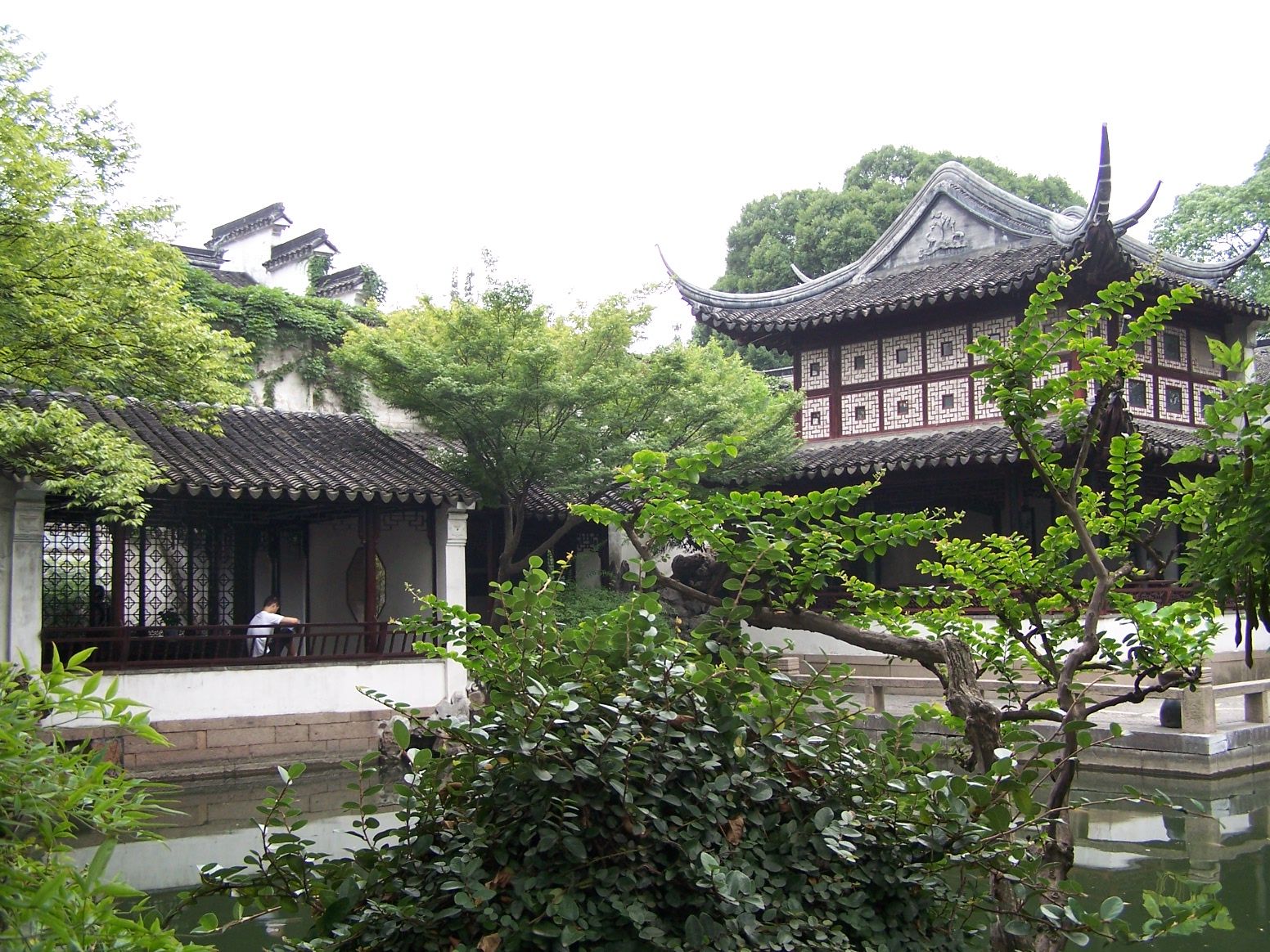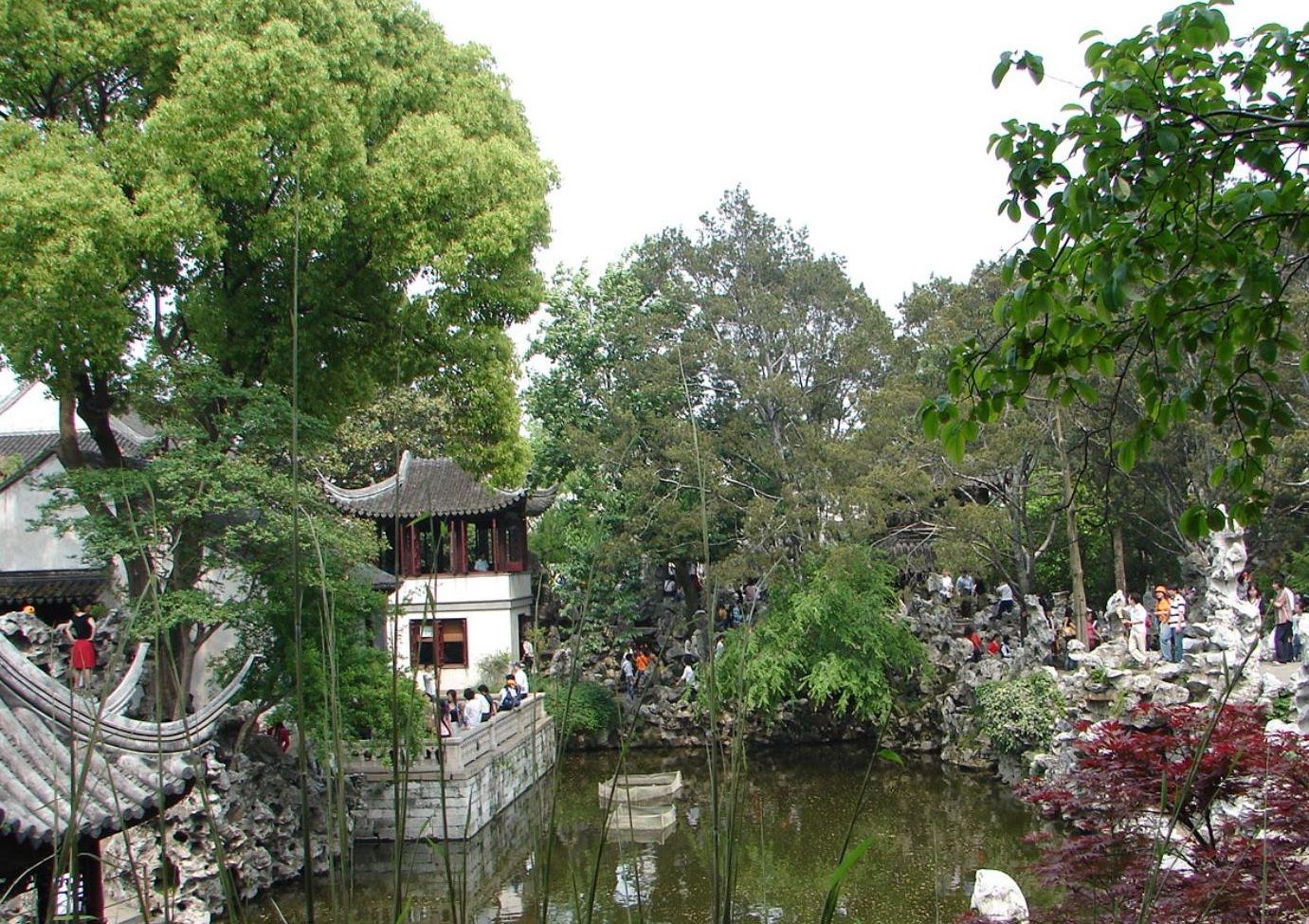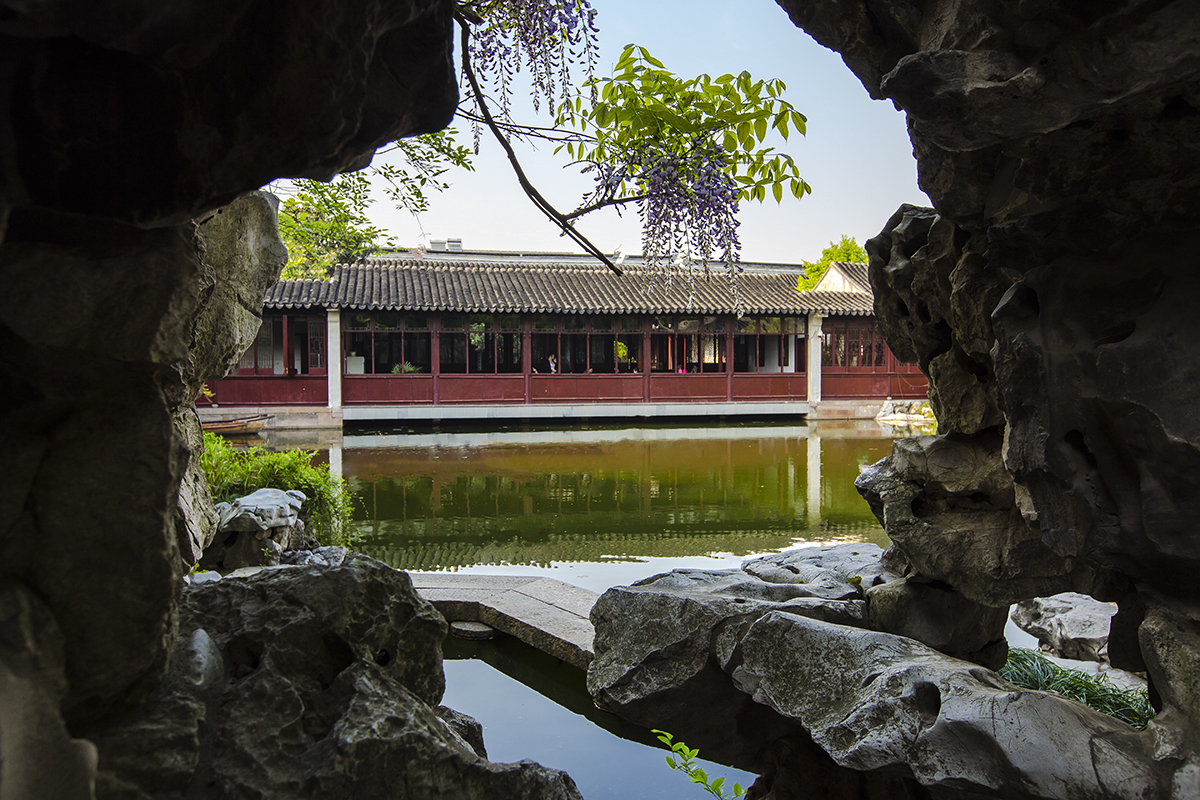

 Architecture
Chinese architecture
Architecture
Chinese architecture

 Architecture
Chinese garden
Architecture
Chinese garden
 China
China
 Jiangsu Sheng-JS
Jiangsu Sheng-JS

 Life and Style
Life and Style

 Traditions
Traditions

 World Heritage
World Heritage
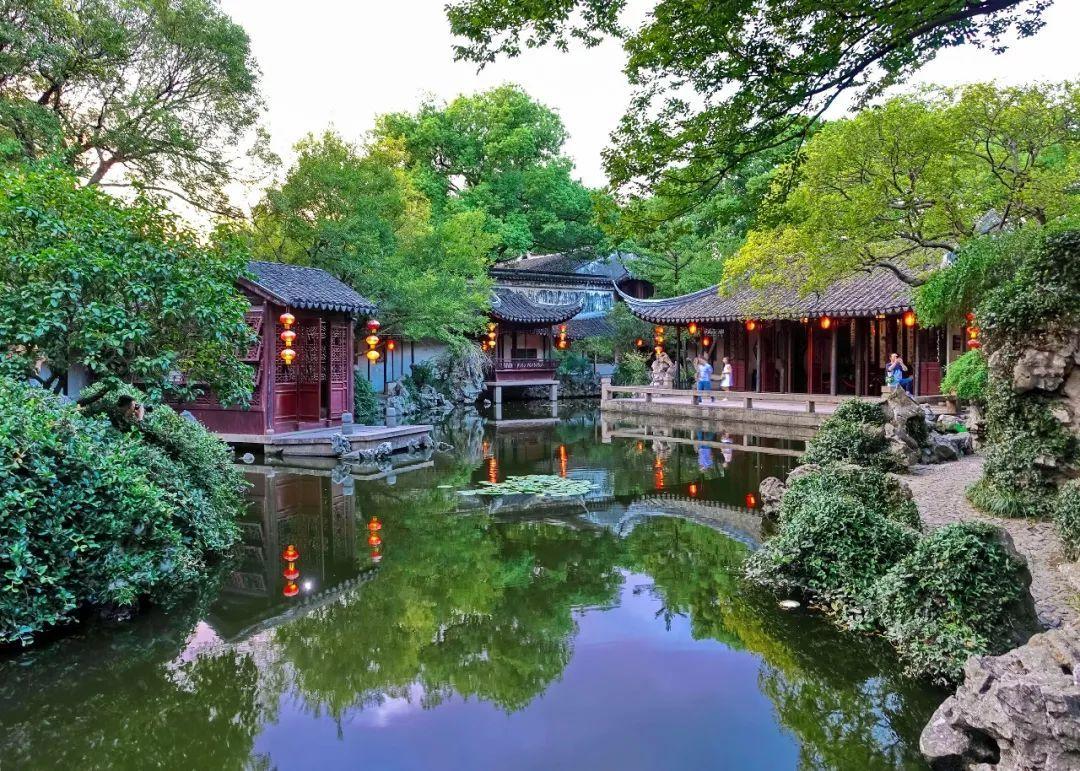
Klassische Gärten von Suzhou[1] ist eine von der UNESCO gelistete Stätte des Weltkulturerbes in China.[2] Das Kulturerbe umfasst neun Gärten der Stadt Suzhou in der ostchinesischen Provinz Jiangsu. Die Gärten aus dem 11. bis 19. Jahrhundert sind herausragende Meisterwerke chinesischer Gartenkunst, die danach strebt natürliche Landschaften im Kleinformat nachzubilden. In ihrer sorgfältig ausgearbeiteten Gestaltung spiegeln die Gärten die tiefgründige Bedeutung natürlicher Schönheit in der chinesischen Kultur wieder.[2]
苏州古典园林或称苏州园林、苏式园林是中国古典园林的重要流派,亦是江南园林的重要代表。这一流派源自中国苏州地区的园林建筑,以私人营造的古典园林为主。苏州园林起始于春秋时期的吴国建都阖闾城时(前514年),形成于五代,成熟于宋代,兴旺于明代,鼎盛于清代。到清末苏州地区已有各色园林一百七十多处,现保存完整的有六十多处,对外开放的园林有十九处。园林占地面积不大,但以意境见长,以独具匠心的艺术手法在有限的空间内点缀安排,移步换景,变化无穷。1997年,苏州城内的四座园林以苏州古典园林之名作为中国园林的代表被列入《世界遗产名录》。
蘇州古典園林(そしゅうこてんえんりん)は、ユネスコの世界遺産に登録されている、中国の江蘇省蘇州市にある歴史的な庭園の総称。蘇州古典庭園とも。
蘇州古典園林の庭園の多くは明や清の時代に建設された。これらの多くは地元の名士により作られたもので、公共事業としてではなく、個人の趣味で置かれたもので、皇帝所有の庭園である皇家園林に対して私家園林という。庭園は豊かな水を利用し、池を配置した素朴な美しさを特徴とする。蘇州以外の江南の地にある名園(例えば上海の豫園)を含めた江南私家園林が総称として中国国内では一般的である。
蘇州古典園林のうち、拙政園と留園は中国四大名園の二つに数えられる。また、宋代の滄浪亭、元代の獅子林、明代の拙政園、清代の留園の4つの時代にそれぞれ作庭起源をもつ庭園を合わせて蘇州四大園林ともいう。
The Classical Gardens of Suzhou (Chinese: 苏州园林; pinyin: Sūzhōu yuánlín) are a group of gardens in Suzhou region, Jiangsu province, China, which have been added to the UNESCO World Heritage List.
Spanning a period of almost one thousand years, from the Northern Song to the late Qing dynasties (11th-19th century), these gardens, most of them built by scholars, standardized many of the key features of classical Chinese garden design with constructed landscapes mimicking natural scenery of rocks, hills and rivers with strategically located pavilions and pagodas.[1]
The elegant aesthetics and subtlety of these scholars' gardens and their delicate style and features are often imitated by various gardens in other parts of China, including the various Imperial Gardens, such as those in the Chengde Mountain Resort.[2] According to UNESCO, the gardens of Suzhou "represent the development of Chinese landscape garden design over more than two thousand years,"[3] and they are the "most refined form" of garden art.[3]
These landscape gardens flourished in the mid-Ming to early-Qing dynasties, resulting in as much as 200 private gardens.[1] Today, there are 69 preserved gardens in Suzhou,[4] and all of them are designated as protected "National Heritage Sites."[5] In 1997 and 2000, eight of the finest gardens in Suzhou along with one in the nearby ancient town of Tongli were selected by UNESCO as a World Heritage Site to represent the art of Suzhou-style classical gardens.[4]
Famous Suzhou garden designers include Zhang Liang, Ji Cheng, Ge Yuliang, and Chen Congzhou.
Les jardins classiques de Suzhou sont des chefs d'œuvre de l'art des jardins chinois aménagés du XIe au XIXe siècles dans la ville historique de Suzhou et classés dans la liste du patrimoine culturel mondial de l'UNESCO.
I giardini classici di Suzhou sono un gruppo di giardini situati a Suzhou, nella provincia di Jiangsu, in Cina: otto di questi sono stati dichiarati dall'UNESCO patrimonio dell'umanità.
Suzhou fu fondata nel 514 a.C. come capitale del regno di Wu: in poco tempo divenne il centro politico, economico e culturale della regione. I primi giardini furono edificati già al tempo della fondazione della città, ma fu sotto le dinastie dei Ming e dei Qing, in particolare tra il XVI e il XVII secolo[1], che raggiunsero il loro massimo splendore, arrivando a contare, nelle mura di Suzhou, oltre 200 giardini, a cui se ne aggiungevano altri 100 all'esterno[2]: la città venne definita come "paradiso terreste". Divennero quindi il modello d'ispirazione per i cosiddetti giardini cinesi. Di questi giardini se ne sono conservati 69, tutti designati come patrimonio nazionale: nove di questi, nel 1997 e nel 2000, sono stati selezionati dall'UNESCO come patrimonio dell'umanità.
Il classico giardino di Suzhou rappresenta un microcosmo del mondo con alla base elementi naturali come acqua, pietre e piante, secondo gli insegnamenti filosofici di Laozi e Zhuāngzǐ: sono state create artificialmente colline e corsi d'acqua e messi a dimora alberi, arbusti e piante da fiore, oltre a numerosi edifici, nel tipico stile tradizionale cinese, dalle svariate dimensione e per diversi scopi come la meditazione, la lettura e la scrittura, bere il tè, suonare o ascoltare musica[2]. Sono inoltre poste iscrizioni calligrafiche, che si riferiscono alla filosofia e alla letteratura cinese, e antiche stele.
Los jardines clásicos de Suzhou son un conjunto de jardines en la ciudad de Suzhou de la provincia de Jiangsu (China), están considerados como Patrimonio de la Humanidad por la Unesco desde el año 1997 y fueron ampliados en el 2000.
En 1997, el Jardín del administrador humilde, Jardín Liuyuan, Parque y jardín Wangshi Yuan, el más famoso de Suzhou, y la Villa de la montaña abrazada por la belleza fueron incluidos en la lista de la Unesco Patrimonio de la Humanidad. En 2000, el Pabellón Canglang, el Jardín de los leones, el Jardín de cultivo, el Jardín Ouyuan y el Jardín Tuisiyuan fueron añadidos a la lista.
Suzhou es la ciudad de China que más jardines conserva. La mayoría de estos jardines pertenecían a casas particulares. La arquitectura clásica de los jardines chinos incluye siempre cuatro elementos: rocas, agua, pabellones y plantas.

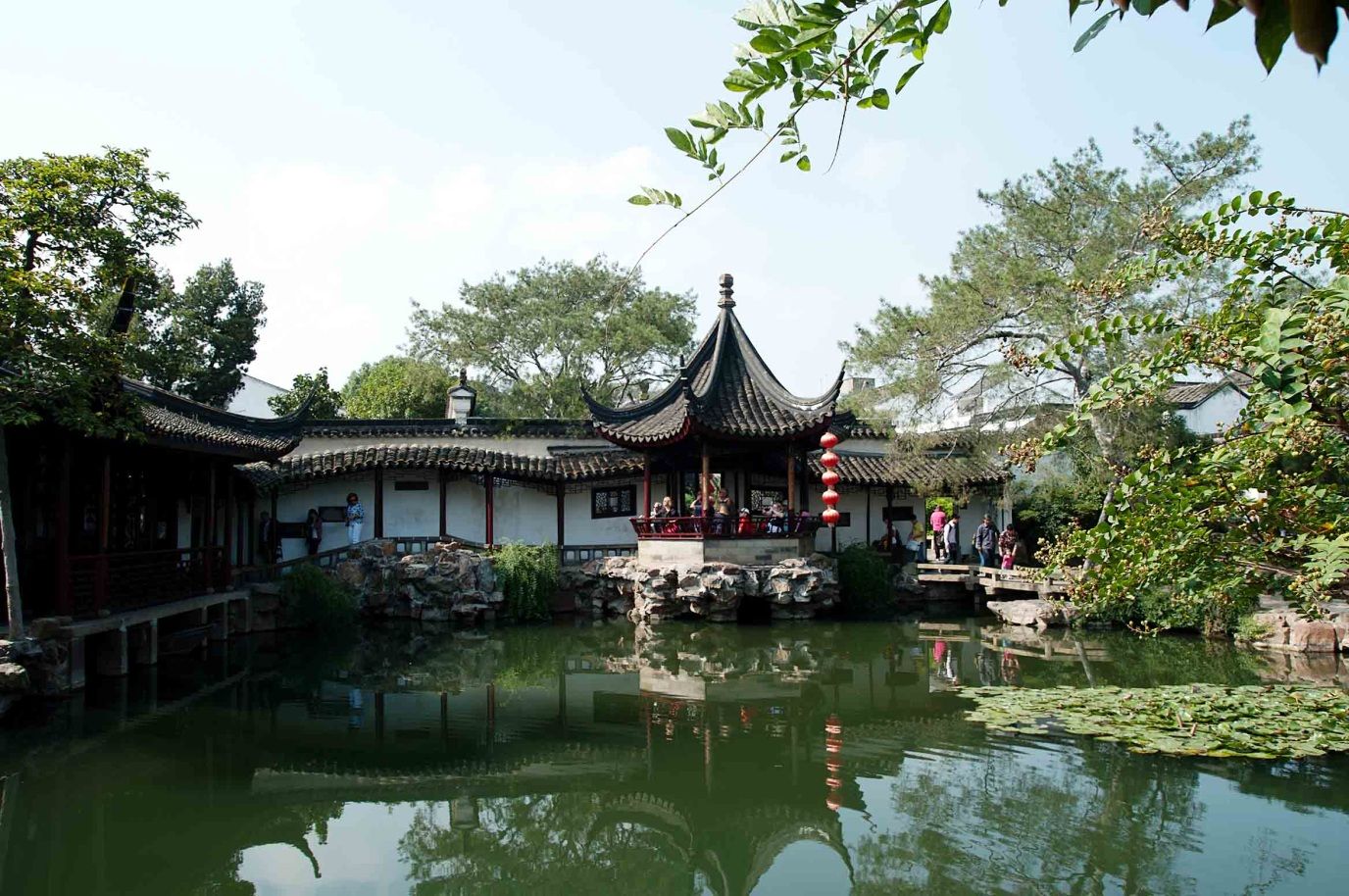
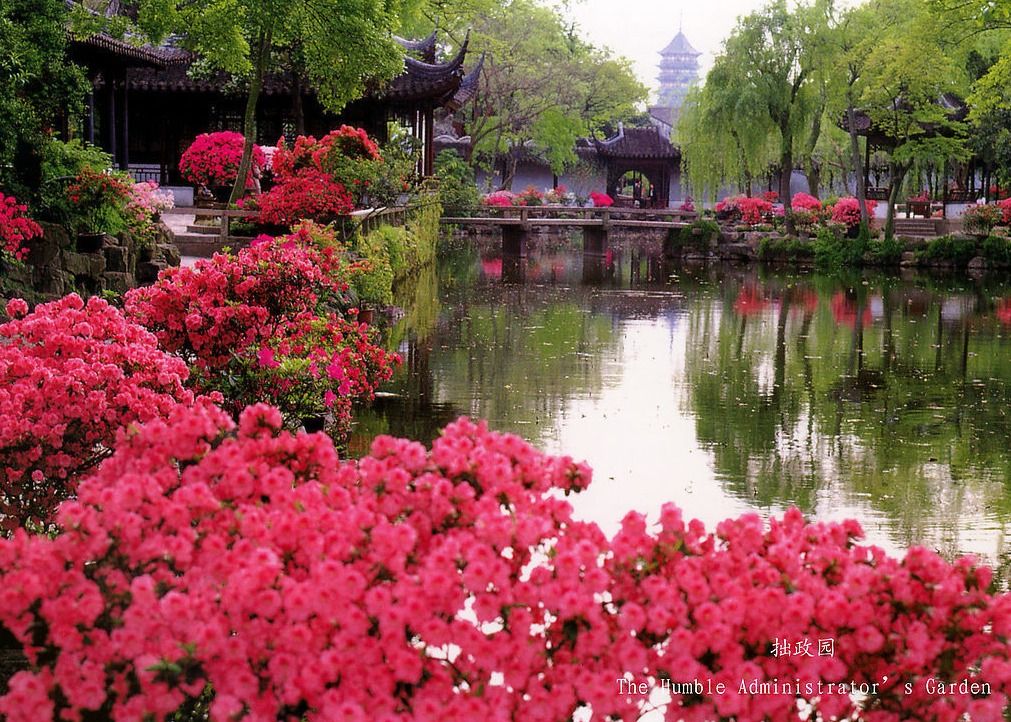
Das Areal wurde in der Tang-Dynastie (618-907) angelegt und erfuhr eine sehr wechselhafte Geschichte. Während es in der Yuan- Dynastie (1279-1368) einem Kloster angehörte, ging es 1513 in den Besitz des ehemaligen Beamten Wang Xianchen über, der nach seinem Ruhestand auf der Suche nach einer sinnvollen Beschäftigung war, daher auch der Name des Gartens. Wangs Sohn verlor den Garten jedoch bei einer Spielwette, womit für diese Miniaturwelt eine Zeit von Besitzwechseln und Teilungen anbrach. Erst 1949 wurden die Teilungen aufgehoben, der Garten restauriert und wieder für Besucher geöffnet. 1997 wurde dem Garten aufgrund seiner architektonischen Bedeutung der Status als UNESCO Welterbe verliehen.
